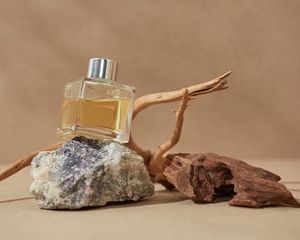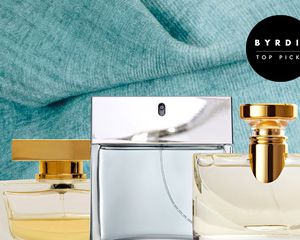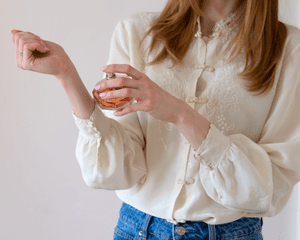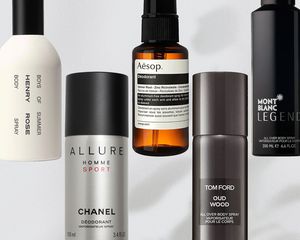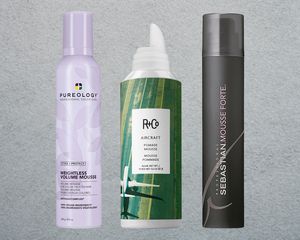:max_bytes(150000):strip_icc()/promo-444356eb3b5d4b9dbfe91966cf63a65d.jpg)
Stocksy
If you're looking to set yourself apart, look no further than a signature scent. And what better way to define your olfactory footprint than with a DIY cologne formula you conceive of yourself?
If you learn how to make your own cologne, you can create any sort of blend you like, from woodsy and herbal, to floral and powdery. Whatever your pleasure, you can express your creative side with a bespoke flavor profile that's decidedly you.
Ahead, learn more about cologne (like what sets it apart from perfume) and find everything you need to create a scent that conveys your aesthetic, along with tips from professional cologne formulators.
The Difference Between Cologne and Perfume
"There’s a perception that colognes are for men and perfume is for women, but the difference is actually in the concentration of oils," says Melina Polly, co-founder and former CEO of Henry Rose. "An eau de parfum is about 15 to 20 percent fragrance oil, while cologne is between two to four percent."
Cologne is less concentrated and more volatile than perfume. It is mainly a citrus, aromatic base to give a refreshing feeling.
Here's What You'll Need
According to Matthew Milèo, chemist, former in-house nose for Chanel and founder of oud-infused skincare line, Milèo New York, "All you need are alcohol, essential oils/absolutes, water, glycerin, and a fancy spray bottle worthy of the top shelf in your vanity."
- Essential oil blend: Use three essential oils: top, middle, base
- Alcohol: Rubbing alcohol or witch hazel works
- Glycerin: Use glycerin, like vegetable oil to add longevity to your formula, and help the cologne stick to your skin
- Distilled water
- Spray bottle
"You can even be extra fancy and throw in a dried flower or two," suggests Milèo.
How to Make Your Own Cologne
Once you've gathered all of the necessary ingredients and materials, formulating your own cologne is actually fairly easy. Don't be intimidated, just follow the exact steps below.
Step One: Familiarize Yourself With the Fragrance Scale
Carina Chaz, the founder and formulator of DedCool, says it's important to "understand the fragrance scale," when blending your bespoke formula. "Top notes will be the first thing you’ll smell in your composition. Middle will appear once the top note dries down, and base will be the fragrance foundation. Fragrance is all about ratios."
Milèo, a formally trained chemist, agrees. Although you don't need to know your way around a lab in order to create an amazing DIY cologne. "The best way to guarantee a scent you’ll love is to follow the basic pyramid accord, which is 60 percent of base notes, 30 percent middle notes, and 10 percent top notes. There are many fragrance shapes and configurations, but for a DIY beginner, this is a good starting point."
Chaz suggests using a ratio of 20 percent base, 50 percent middle, and 30 percent top. It's up to you to figure out the formula that works with the type of profile you're trying to create. Experiment for a recipe you adore.
Step Two: Choose Your Essential Oils
There are so many options when it comes to essential oils that it can be difficult to pick a favorite. If you lean toward woody, slightly sweet scents, you might reach for cedarwood, which is very grounding. If romantic florals are more your thing, try jasmine, rose or ylang ylang. Remember that whatever scent you select will be diluted and blended, so the final result will likely be different and more muted than the first whiff of one scent itself.
Step Three: Blend the Essential Oils
This is the fun part. "Now it's time to start playing around," says Chaz. "Remember, not all notes go together; this is where the trial and error come into play. Drop a few oils (one by one) and start mixing. Helpful hint: I always recommend using no more than 30 drops total and if one scent is much stronger than the rest, use less." Once you have your desired formula, add two ounces of alcohol.
Byrdie Tip
According to Milèo, base notes like sandalwood, tonka bean, violet leaf, and vanilla blend well with middle notes like geranium, ylang ylang, rose, and lotus flower. Top this formula off with lavender, neroli, magnolia, mandarin, and your fragrance is worthy of signature scent status.
Step Four: Brew
Now the cologne needs time to compose. "Allow the fragrance to brew and sit for 48 hours. I always refrigerate for two weeks straight. Then, shake it up so that molecules can mix," says Chaz.
Step Five: Dilute
Once the fragrance is ready, it needs to be diluted. In a spray bottle, add two tablespoons of distilled water and five drops of glycerin. Swirl your bespoke fragrance mixture in, slowly and carefully. And just like that, you're a perfumer with your own signature cologne.
